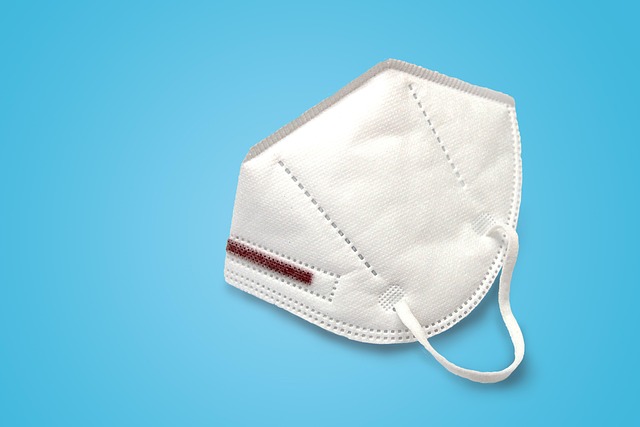Understanding Crypto Wallets: A Comprehensive Guide
In the ever-evolving world of cryptocurrency, selecting the right crypto wallet can be a daunting task. With various types available, each serving different purposes, understanding these wallets is crucial for safeguarding your digital assets. This article explores my personal journey through the world of crypto wallets, including my failures, successes, and the lessons I've learned along the way. I will also provide you with reliable resources to enhance your understanding and guide you in making informed decisions.
When I first ventured into the cryptocurrency space, I was filled with excitement but also confusion. The myriad of options available, from exchanges to wallets, was overwhelming. I initially thought that storing my cryptocurrencies on an exchange would suffice. However, after a couple of unfortunate incidents—like the time I lost access to my funds due to a security breach—I quickly learned the importance of using a dedicated crypto wallet. This realization prompted me to dive deeper into the different wallet options available and assess their respective pros and cons.

Types of Crypto Wallets
Crypto wallets can be broadly categorized into two types: hot wallets and cold wallets. Hot wallets are connected to the internet, making them more accessible but also more vulnerable to hacking. On the other hand, cold wallets are offline, providing an extra layer of security but at the cost of convenience. I started with a hot wallet but soon transitioned to a cold wallet after realizing the risks associated with keeping my assets online. Understanding these categories is essential for making informed decisions about how to store and manage your cryptocurrencies.
Hot Wallets
Hot wallets are user-friendly and ideal for beginners. They allow for easy access to your funds for trading and transactions. I initially used a popular hot wallet app, which facilitated quick trades and transfers. However, after experiencing a phishing attempt that nearly cost me my assets, I decided to take security more seriously. While they are convenient, it's vital to ensure you're using a reputable wallet and enabling all security features available, such as multi-signature authentication and withdrawal whitelists. Moreover, keeping your software updated is essential as it often contains important security patches.
Hot wallets can further be classified into:
- Web Wallets: Accessible via web browsers, these wallets provide instant access from any device but may lack robust security features.
- Mobile Wallets: Designed for smartphones, these wallets offer convenience for on-the-go transactions, though they can be susceptible to malware.
- Desktop Wallets: Software installed on your personal computer, providing a balance between security and usability, but at risk if your computer is compromised.
Cold Wallets
Cold wallets, such as hardware wallets, are perfect for long-term storage of cryptocurrencies. After my initial experience with hot wallets, I invested in a hardware wallet and never looked back. It provided me with peace of mind knowing my assets were stored offline, away from potential online threats. Brands like Ledger and Trezor are highly regarded in the industry and have proven to be secure options. Additionally, cold wallets often come with features such as seed phrase backup and PIN protection, enhancing the security of your crypto holdings. It's worth noting that cold wallets can be further categorized into USB devices and paper wallets, each offering distinct advantages depending on your needs.
Cold wallets are advantageous for the following reasons:
- Enhanced Security: Since they are not connected to the internet, cold wallets are less susceptible to hacking attempts.
- Long-Term Storage: Ideal for investors looking to hold their assets for an extended period, cold wallets minimize the risk of theft.
- Control Over Private Keys: Users have complete control over their private keys, ensuring they have full ownership of their assets.
Choosing the Right Wallet
Choosing the right wallet comes down to your individual needs. Consider factors such as security, convenience, and the types of cryptocurrencies you own. Initially, I didn't do enough research and ended up with a wallet that didn't support all my assets, which limited my ability to diversify my portfolio. This experience taught me the importance of thoroughly checking compatibility before making a decision. Furthermore, assess whether you need a wallet that supports multiple cryptocurrencies or if you prefer to keep your assets in separate wallets tailored to each specific coin.
Security Features
When selecting a wallet, look for features like two-factor authentication (2FA), backup options, and recovery phrases. After learning the hard way about the importance of security, I made it a point to prioritize wallets that offered robust security features. This has saved me from potential losses and provided a greater sense of security. Additionally, consider whether the wallet allows you to control your private keys, as this is a significant factor in maintaining ownership of your assets. Furthermore, research the wallet provider's reputation and history, as some have had security breaches in the past, which can influence your decision.
Setting Up Your Wallet
Once you've chosen a wallet, setting it up is the next step. This process can vary depending on the wallet type. For hot wallets, the setup is usually straightforward, requiring you to download an app and create an account. Cold wallets, however, involve a bit more work, including installing software and connecting the device to your computer. During my first setup, I made the mistake of skipping the backup process, thinking it was unnecessary. A few weeks later, my computer crashed, and I lost access to my wallet. It was a painful lesson that taught me the importance of backing up my wallet and storing recovery phrases in a secure location, ideally in a physical form stored safely away from potential threats.

Using Your Wallet
Using your wallet for transactions is relatively simple, but it’s important to be aware of potential pitfalls. When I first started trading, I made the mistake of not double-checking wallet addresses before sending funds. This led to a costly error where I sent my crypto to the wrong address. Always take a moment to verify the address before making a transaction, as cryptocurrency transactions are irreversible. Furthermore, familiarize yourself with transaction fees associated with different wallets, as these can vary significantly and impact your overall trading strategy. Additionally, many wallets provide a transaction history that can help you track your spending and ensure accuracy.
Storing Different Cryptocurrencies
Not all wallets support every cryptocurrency. As I expanded my portfolio, I found myself needing multiple wallets. Some wallets are designed specifically for certain coins, while others can hold a variety. I learned to keep my assets organized and use the right wallet for each cryptocurrency. Additionally, consider the user experience offered by each wallet; an intuitive interface can significantly enhance your ability to manage multiple assets efficiently. Tools such as portfolio trackers can also assist you in monitoring the performance of your investments across different wallets.
Keeping Your Wallet Secure
Security is paramount when it comes to crypto wallets. I have experimented with different security measures and found that enabling 2FA and using strong, unique passwords are essential practices. Additionally, keeping your software updated ensures you have the latest security patches. One of my biggest security failures was not using a hardware wallet sooner. Once I made the switch, I felt a significant increase in my asset security. Cold wallets like the Ledger Nano X or Trezor Model T provide an additional layer of protection that hot wallets simply can't offer. Always stay informed about the latest security threats in the cryptocurrency space and adjust your practices accordingly. Joining online communities or forums can also provide valuable insights into new security measures and wallet reviews.
Understanding Fees
When using wallets, it's important to understand the fee structure. Many wallets charge fees for transactions, which can vary significantly depending on network congestion and wallet provider. I’ve had experiences where I didn’t account for these fees, which led to smaller amounts of crypto being sent than I intended. Always review the fee structure before making transactions, and consider the impact of these fees on your trading strategy. Additionally, some wallets may offer lower fees for certain types of transactions or during specific times, so staying informed can help you save on costs. Be aware of hidden fees, such as withdrawal fees or conversion fees, which can also affect your total cost.

Resources for Further Learning
To deepen your understanding of crypto wallets, I recommend a few reliable resources:
- Binance Wallet: Binance is one of the largest exchanges and offers a user-friendly wallet option. I started using Binance for trading, and their wallet integrates seamlessly with the exchange.
- MEXC Wallet: MEXC provides a solid platform for trading various cryptocurrencies and offers a wallet feature. I found it to be a great place for lesser-known altcoins.
- Bitget Wallet: This platform is excellent for futures trading and has a wallet that makes it easy to manage your assets.
- Bybit Wallet: Bybit is renowned for its derivatives trading, and their wallet offers an easy way to manage your investments.
- Coinbase Wallet: A highly popular choice for new users, Coinbase offers a secure wallet with user-friendly features, making it an excellent starting point for beginners.
- CryptoCompare Wallet Guide: This resource provides comprehensive comparisons of various wallets, helping you choose based on your needs.
Final Thoughts
Navigating the world of crypto wallets can be challenging, but with my experiences, I hope to provide some clarity. From my initial failures to my eventual success in securing my assets, I've learned valuable lessons about choosing the right wallet, ensuring security, and managing transactions effectively. Each experience has shaped my understanding and appreciation for the importance of a good wallet in the cryptocurrency ecosystem.
In summary, whether you opt for a hot wallet for everyday transactions or a cold wallet for long-term storage, always prioritize security and compatibility. Do your research, learn from mistakes, and never underestimate the value of safeguarding your digital assets. In an increasingly digital and decentralized world, being proactive about your cryptocurrency storage can make a significant difference in your overall experience in the crypto space.
Common Questions About Crypto Wallets
As I navigated the world of cryptocurrency wallets, I encountered several common questions that many newcomers have. Below, I've compiled some frequently asked questions to further aid your understanding:
1. What is a crypto wallet?
A crypto wallet is a digital tool that allows you to store, send, and receive cryptocurrencies. It does not physically store your crypto; instead, it holds the keys that allow you to access your assets on the blockchain.
2. Are crypto wallets safe?
The safety of a crypto wallet largely depends on its type and how you use it. Cold wallets are generally more secure than hot wallets because they are not connected to the internet. However, good security practices—like using strong passwords, enabling 2FA, and keeping software updated—are crucial regardless of the wallet type.
3. Can I access my crypto wallet from multiple devices?
Many hot wallets allow access from multiple devices, but this can increase vulnerability. Cold wallets typically require you to connect the physical device to a computer, limiting access to that specific device. Always ensure that your access methods are secure and do not expose your wallet to unnecessary risks.
4. What should I do if I lose my wallet?
If you lose access to your crypto wallet, recovery depends on the type of wallet and whether you have a backup. Most wallets provide recovery phrases that can help you restore access. If you lose your recovery phrase, unfortunately, you may lose access to your funds permanently.
5. How do I transfer cryptocurrency between wallets?
To transfer cryptocurrency between wallets, you need to obtain the receiving wallet's address and initiate a transfer from your current wallet. Ensure you double-check the address to avoid sending funds to the wrong location. Be aware of transaction fees that may apply during the transfer process.
6. Are there fees associated with using crypto wallets?
Yes, many wallets charge transaction fees, which can vary based on network conditions and wallet providers. Always review the fee structure before making transactions, and keep an eye out for any hidden fees that may affect your total costs.

Conclusion
The world of crypto wallets can seem overwhelming, but with careful research and understanding, you can navigate it successfully. My personal experiences have underscored the importance of security, proper wallet selection, and the need to stay informed about the evolving landscape of cryptocurrency storage solutions. By prioritizing education and best practices, you can effectively manage your digital assets and mitigate risks associated with cryptocurrency transactions. Always remember, your security is paramount, and the right wallet can make all the difference.